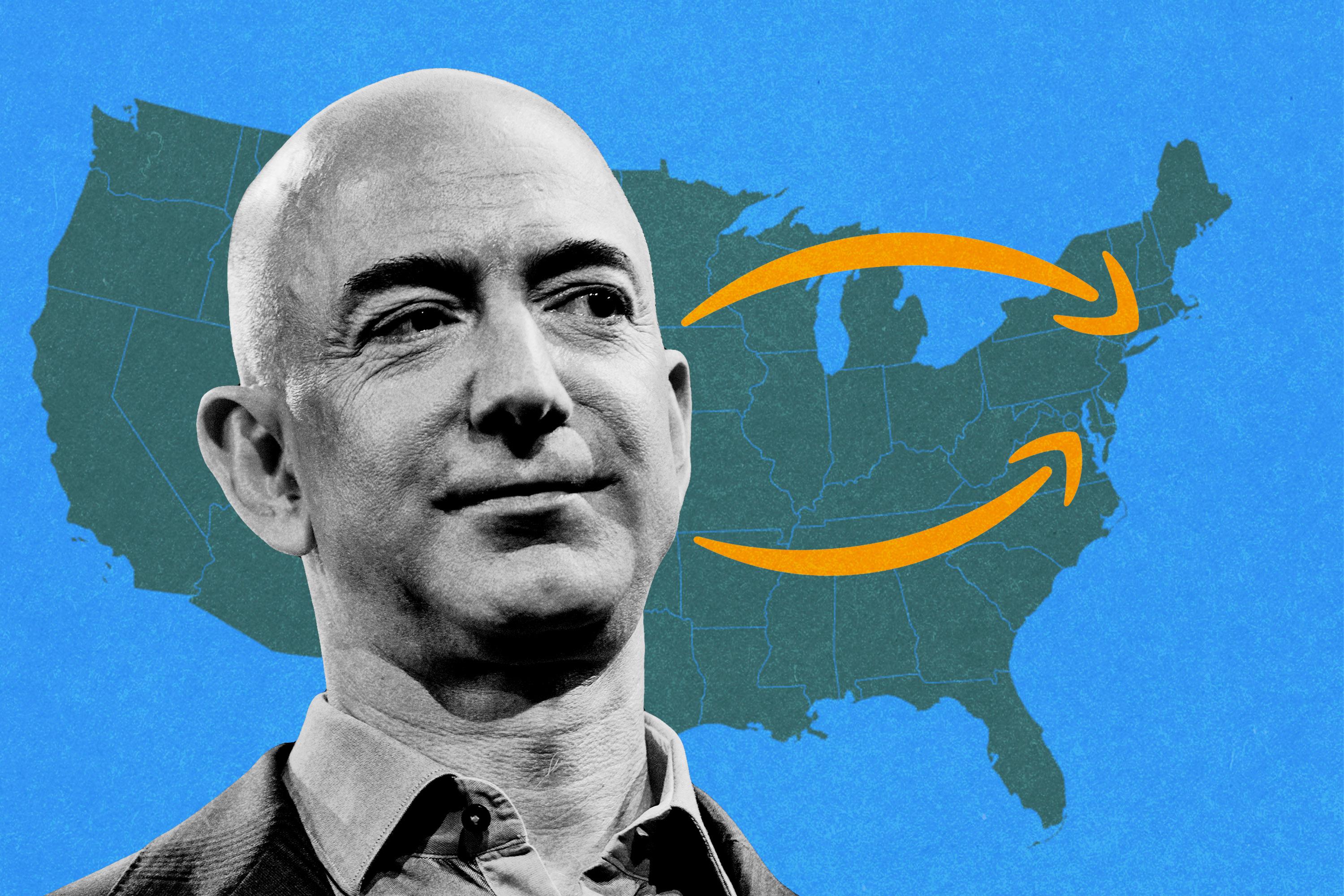Amazon Held a Yearlong HQ2 Reality Show Just to Pick New York City and Washington, D.C.
After a long and public bidding process, the tech giant chose to expand to the most obvious candidate cities on its list. Tuesday’s announcement makes clear: Amazon’s decision was never about revitalizing U.S. cities, after all.
The long, national thirst wars have finally come to an end. Amazon has finally settled its year-long search for the location where it will build its second headquarters, or “HQ2.”
That second headquarters won’t be the tantalizing economic boon of some 50,000 workers that it had promised to a single city. Rather, it will be split between two smaller offices—an HQ2 and an HQ3—located in Long Island City, Queens and Crystal City, a neighborhood in Arlington, Virginia, that Amazon has apparently renamed to “National Landing.” Amazon will invest $5 billion in the undertaking, according to a blog post announcing the deal. Nashville will house Amazon’s new Operations Center of Excellence, which is a fancy title for the group that manages the often miserable warehouses where people’s online orders are boxed and mailed. (With 5,000 new jobs, that one won’t quite qualify as an HQ4.) Hiring at the new locations will begin in 2019. Condolences to Dallas, which was reportedly the third finalist in the HQ2 search. At least you’ve kept your dignity.
Amazon’s decision will undoubtedly change the culture, infrastructure, and commuting circumstances for the winning locations. We’re already seeing the beginning of that in real estate prospectors and public panic. Separately, this announcement concludes a drawn-out, high-profile search that was just as much a powerful public relations tool as it was a way for Amazon to peacock about its overwhelming corporate power. In the past decade, Amazon has emerged as a classic corporate villain. First, it came for our precious local bookstores and the authors that helped fill them. Then, the mom-and-pop stores. Then, when it had sufficiently conquered small businesses, it bought Whole Foods. All the while, it plowed forward amid reports that it fostered emotionally fraught, physically grueling work environments. Jeff Bezos slowly but surely became both (1) swole and (2) the richest man alive. His lack of interest in philanthropy throughout his journey manifested in a 2017 tweet, in which he attempted to crowdsource ideas for what to do with his riches. It was only last month that the company raised its minimum wage to $15 an hour. Amazon’s reckless pursuit of commerce domination has inspired criticism from everyone from Senator Bernie Sanders to President Donald Trump.
Amazon is quite aware of its less-than-favorable reputation, which is exactly why it relished in its year-long publicity tour as a valued job creator. Desperate cities fell over each other to woo the company, offering hard-to-fathom tax incentives that prompted a Saturday Night Live skit and a string of memorable Onion headlines. This month, as reports indicated Long Island City was in the running for HQ2, New York Governor Andrew Cuomo joked that he would change his first name to “Amazon,” if that’s what it took to recruit the company. (This is, without question, what New York residents should call him from now on. Give me a petition to sign.) While this coverage wasn’t entirely positive, the underlying message was advantageous. Amazon, the evil corporation that everyone loves to hate, was wanted. Needed, even.
The last-minute bait-and-switch to divide HQ2 was classic Amazon. The company has been known to set terms with both vendors and Prime subscribers, only to later adjust them in its favor. Amazon is a giant corporate Katamari ball that forces everything in its path into its orbit. In this case, Amazon negotiated the best possible tax breaks and infrastructure incentives to see what the company could squeeze from local governments, all the while offering a hopeful vision that it could breathe life into an ailing U.S. city. In the end, it offered half the number of employees to two metropolitan neighborhoods that already had relatively talented workforces. “We can recruit more top talent by being in two locations,” read a blog post on the company website. “These are fantastic cities that attract a lot of great talent.” That statement sums it up. Amazon was never going to do the country any favors, but it reveled in a year’s worth of public imagination that it might.